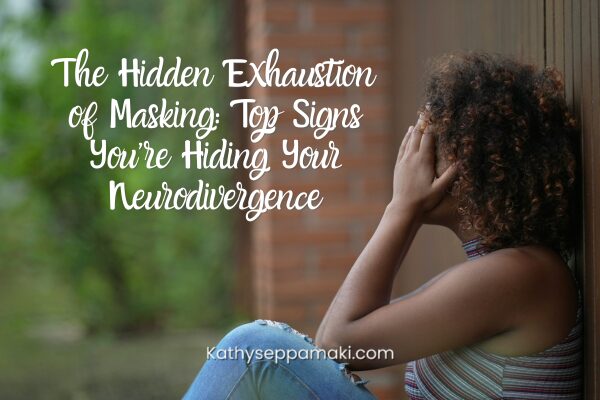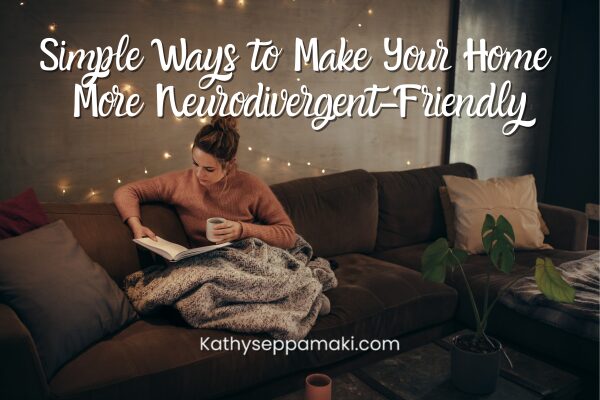Notice: I’m an affiliate for Amazon as well as other companies. Any links in this article may be affiliate links. I always appreciate it if you purchase something using my affiliate links. Doing so helps me to raise a little extra money that pays for the costs of running this site. And it allows me to continue bringing you quality content, all without costing you a thing! Thanks!
As I’ve been working to unmask and connect even more fully with who I truly am, I have been uncovering something unexpected. There is a level of intense joy that I didn’t expect. This joy happens the more I give myself permission to do the things that I love. There is a name for it…autistic joy.
Autistic joy is the unfiltered, wholehearted delight autistic and AuDHD people experience when they can fully immerse themselves in what they love. Whether that’s diving deep into a special interest, savoring a comforting sensory experience, or expressing excitement through movement, sound, or words without fear of judgment. It’s often intense, pure, and beautifully authentic, free from the need to mask or tone it down to fit neurotypical expectations.
Autistic joy can be sparked by the smallest moments. The feel of a soft fabric, the sound of rain, the satisfaction of arranging objects just so. And it nourishes the autistic spirit, helping to restore energy and well-being in a world that can be overwhelming. At its heart, autistic joy is about connection: to self, to the present moment, and to what makes life feel truly worth living.
What autistic joy can look like:
Being immersed in a special interest — spending hours researching, creating, or engaging with a topic you love.
Sensory pleasure — enjoying textures, colors, sounds, movements, or other sensations in a way that feels profoundly satisfying.
Stimming from happiness — flapping hands, bouncing, humming, or rocking because the joy is too big to contain.
Authentic connection — being with people (or animals) who accept you completely, where you don’t have to mask.
Pure presence — getting lost in the moment and feeling a grounded, contented sense of being exactly where you’re meant to be.
What makes autistic joy unique is that it’s often intense, genuine, and unapologetic. The opposite of the masking many autistic people have to do in a world that misunderstands them. It’s also an important part of well-being, because it restores energy and helps counteract burnout from navigating a neurotypical world.
Here are some everyday-life examples of autistic joy
Special interest deep dive
You set out to “just read one article” about your favorite historical era… and suddenly it’s three hours later, you have 14 browser tabs open, and you’re smiling because you’ve learned three new obscure facts you must tell someone.
Perfect sensory moments
Running your hands through a bin of smooth glass marbles, wrapping up in a freshly warmed blanket from the dryer, or standing in the shower just to feel the water pressure hit your shoulders in exactly the right way.
Stimming from joy
Your favorite song comes on, and you can’t help but sway, flap your hands, or bounce in your seat because the music feels like it’s moving through you.
Pattern delight
Noticing the perfect symmetry of leaves on a plant, watching the satisfying loop of a knitting stitch, or arranging books by rainbow color and feeling that deep, internal ahhh.
Shared passion moments
Talking to someone who loves your special interest as much as you do — you both start speaking quickly, layering facts and ideas, and there’s zero “you’re talking too much” energy in the room.
Animal connection
A cat choosing your lap, a dog’s happy tail wag when they see you, or watching a bird fluff its feathers — and feeling your whole chest warm from the connection.
Pure fascination
Lying on the floor to watch dust motes in a sunbeam for far longer than you planned, or watching how raindrops race each other down a window like it’s the best sport in the world.
Autistic joy doesn’t have to be big or “productive”. It’s often about letting yourself sink into what feels good without self-consciousness.
How can you reconnect with your autistic joy?
Reconnecting with autistic joy often means peeling back layers of masking, shame, and “shoulds” that have built up from years of trying to fit into neurotypical expectations. It’s about creating space where your authentic self can come out to play. Here’s how:
1. Remember what lit you up as a kid
Think about the activities, topics, or sensory experiences you could get lost in before you learned to hide them. Often, those early loves are still there, waiting.
2. Follow your special interests unapologetically
Let yourself deep dive without guilt, even if it’s “just for fun” or “not useful.” Joy is useful.
3. Seek out sensory delight
Notice the textures, sounds, smells, and sights that make you feel good. Incorporate them intentionally. Use things you love such as soft blankets, favorite scents, a playlist of comforting sounds, and time in nature.
4. Unmask in safe spaces
Find people (or be alone) where you can stim, info-dump, or simply exist without editing yourself.
5. Say yes to “too much.”
If something feels intense in a good way, whether it’s color, sparkle, or enthusiasm, allow it. Too much joy is not a problem.
6. Build in “joy rituals”
Regularly do small things that make you happy — morning tea in your favorite mug, watching a certain video on loop, arranging objects in a way that pleases you.
7. Protect your energy
Autistic joy blooms when you’re not running on empty. Rest before burnout, limit overcommitment, and create recovery time after draining events.
8. Give yourself permission to be delighted
You don’t need to earn joy. It’s not childish, it’s human, and for autistic people, it’s medicine for the soul.
An important part of learning to thrive with autism and AuDHD is allowing yourself to connect with the things that bring out your autistic joy regularly. It is a great way to reduce stress and regulate the nervous system! And the world can always use more joy!




